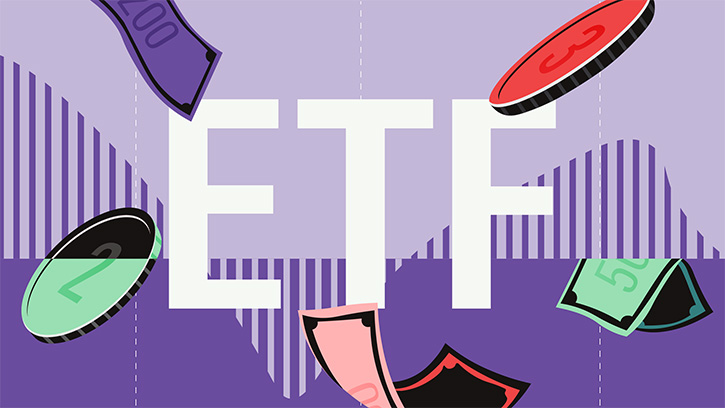
An increasing number of investors are gravitating to exchange-traded funds, or ETFs.
In the US, around 16.1 million households use them, and, while the numbers in the UK are much lower (only 22% of UK retail investors use them), other countries are seeing growth.
In Australia, the number of Aussie investors using ETFs has risen from 15% to 20% in the space of three years alone. They are particularly popular with new investors – ETFs were the first investment for 14% of investors who got started in the last two years, the 2023 ASX Investor survey said. They’re easy to access, provide instant diversification, and can be used to gain exposure to asset classes that are difficult to access directly.
Sounds like a winning formula. But what’s the other side of the coin?
Should I be Cautious About ETFs?
Vanguard founder John Bogle wasn’t a fan. He rejected the chance to list the first ETF in the US. Instead, Nathan Most created the first US ETF with State Street and initially offered to partner with Vanguard, using their S&P 500 Index fund as the trading vehicle.
Bogle responded to this offer by saying trading was a loser’s game for investors and a winner’s game for brokers. In his long career, he became infamous for going to ETF conferences and disparaging ETFs – and there were two main reasons he always referenced.
Bogle believed ETFs led to over-trading. "During the past decade, the principles of the traditional index fund have been challenged by a sort of wolf in sheep’s clothing – the exchange traded fund," he said.
"But let me be clear. There is nothing wrong with investing in those indexed ETFs that track the broad stock market, just as long as you don’t trade them."
What is The Impact of Transaction Costs?
Investors love ETFs because they are easy to access. But this also means they are easy to sell. They trade intraday and investors can switch in and out of investments in under a minute. Each of these transactions are subject to transaction costs.
In saying this, the market and its offerings have changed since the late John Bogle declared his disdain. For one, brokerage costs have gone down and are free in many cases. But that transaction fee isn’t the only cost of trading. You can generate capital gains by selling appreciated investments and there is a buy/sell spread in each transaction. These are all real costs. This just exasperates the impact of poor behaviour from individuals.
Fees are always detrimental to investor returns. However, they can also act as a discouragement to trade. That barrier may be gone but negative impacts of trading remain.
Over-Trading is a Poor Decision
A study conducted by UTS explored whether individual investors benefit from the use of ETFs. The study found lower portfolio performance when investors used ETFs than when they didn’t.
It wasn’t a small loss. The study found ETF portfolios underperformed non-ETF portfolios by 2.3% a year. The loss is the result of buying ETFs at the wrong time rather than choosing the wrong ETFs.
A critical finding in the study was that ETF portfolios did actually outperform if the investor bought the investment and held it for the long-term.
Adopting a buy-and-hold strategy is more important than selecting better ETFs, then.
The underlying issue is that the liquidity and low cost of ETFs encouraged investors to time the market – the exact argument Bogle made. He even acknowledged in his book that ETFs are practically no different to any other collective investment vehicle (like managed funds) if you just purchase them and hold them for the long-term.
Ultimately, investing in an ETF means you are taking the underlying investment decisions out of your hands. You’re investing for exposure to a particular market, or subset of a market. You either trust the strategy, if it is passive, or you trust the professional fund manager, to execute the mandate of the fund. Bogle was right. If investors are offered the option of trading, they often will.
Taxing Consequences
The tax consequences for ETFs are very different than investing in direct equities. The avoidable tax losses come from overtrading, but there are unavoidable tax consequences with ETFs. This is the downside of ETFs that cannot be fixed by adjusting your behaviour.
This is part and parcel of investing in collective investment vehicles: the investor loses control over what is bought and sold within the fund and ETF.
Both active and passive ETFs have mandates that dictate the actions of the managers. For example, a passive fund tracking the FTSE 100 must follow the index. If a stock falls out of the index, the new stock must be bought and the original stock must be sold. Equal weight indices need to be rebalanced at intervals to make sure the equal weighting in maintained.
There’s no consideration of whether it is the best decision for the investor here. Active management also faces similar issues. There are boundaries to how the manager can invest. A fund may have a 10-20% allocation to UK equities. If UK equities perform particularly well, it requires the manager to sell out of UK assets and into other assets regardless of the prospects for the shares.
Rebalancing triggers tax consequences in almost all circumstances. Tax is part and parcel of investing and making money, but there are benefits from choosing when to realise gains.
A cautionary tale is the Global X FANG+ ETF [ASX: FANG], a global innovation leaders ETF. It is supposed to offer investors exposure to highly-traded next generation technology and tech-enabled companies. In 2021 it came under fire by investors, many of whom did not know that the fund rebalanced.
The ETF targets an equal weighting of each stock. To maintain this equal weighting it needs to rebalance by selling down positions that have done well during that period. When you sell positions that have done well, you incur capital gains. These capital gains are passed onto investors through the distribution you receive.
The distribution that was paid out was $2.14 per unit which significantly exceeded 2020's distribution of 12 cents. Given the success of the tech sector in 2021 the fund had to bring those equal weightings back into line due to the rebalancing policy. This led to hefty tax consequences.
Having Your Cake and Eating it Too
Investors can have their cake and eat it too if they understand how investments ties into their goals and their strategy to reach them.
Understanding and trusting the purpose of the investment vehicle in your portfolio is key to reducing poor behaviour. If you understand how the ETF fits into your portfolio and how it’s helping you to reach your financial goals, intraday liquidity and pricing starts to matter less.
This covers all manner of sins when it comes to ETFs. It means that no matter the costs of trading investors will be discouraged from switching in and out of investments too frequently.
Understanding the investments in your portfolio increases your foresight and tolerance to events such as what happened with FANG+ and the potential tax consequences of a portfolio filled with tech stocks. Watching their strong performance and the equal weighted nature of the portfolio provides insights into likely tax bills.
The simplest way for investors to reach this understanding is by constructing a portfolio around their goals, and not around a short-term wealth maximisation strategy.
This article originally appeared on Morningstar's Australian website and has been edited and republished for a UK audience




























